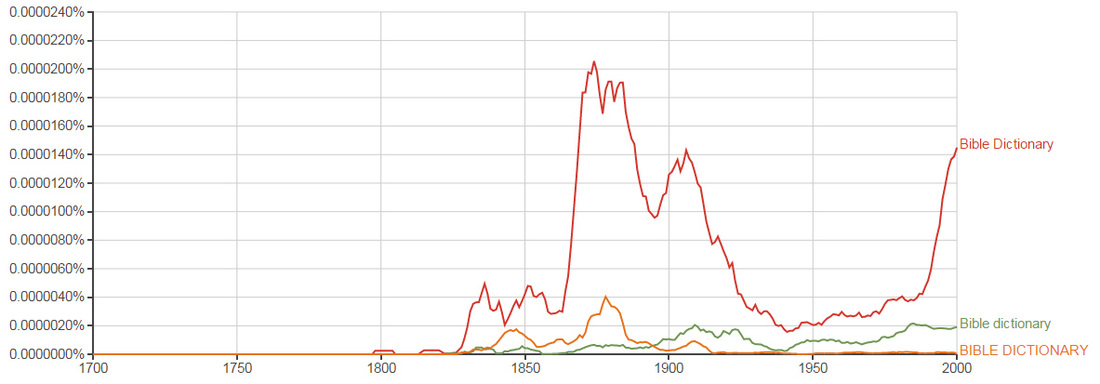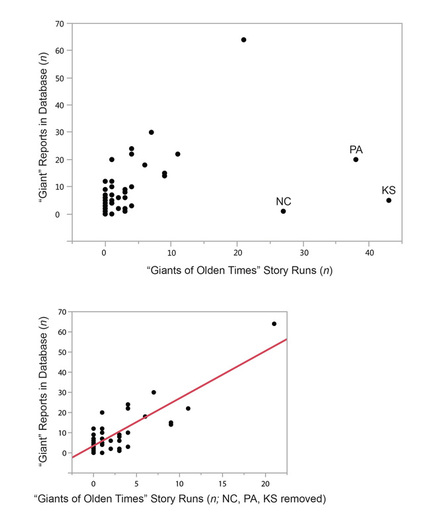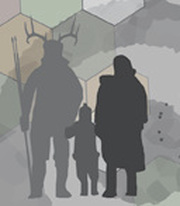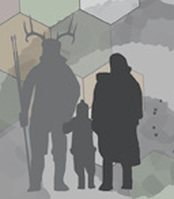
I don't have time to write much about it now, so I'm just going to paste in the content from the About page:
The Argumentative Archaeologist is a website that organizes and compiles links to fact-based information and analysis related to fantastic claims about the human past. While not all "fringe" (i.e., non-mainstream) claims have been shown to be untrue, many have (some of them over, and over, and over again . . .). The goal of this site is to provide road maps to information that will help you both identify what's BS and understand the history and context of some of the many claims about the past that can be shown to be false. They can't all be true, right?.
Who Are the Intended Audiences?
This site was conceived and designed with three main audiences in mind:
- The Public. Almost by definition, most "fringe" ideas come from outside the professional archaeological community. The marketing and selling of those ideas, not surprisingly, are largely targeted to audiences that are also outside of the professional archaeological community ("bypassing the mainstream" is a common part of the pitch). The "fringe" community has done a good job of exploiting traditional print and television media as well as utilizing the internet to uncritically spread sensational claims about the past. While many of those "fringe" claims can easily be shown to be false, the voices of the few individuals and organizations that have made a concerted effort to address the factual basis of those claims are often drowned out the megaphones that the "fringe" community has built for itself. This site is an attempt to assemble links to openly available, critical analysis of "fringe" claims into one central location to make it easier for interested members of the public to get the other side of the story. It wasn't aliens - see for yourself!
- Educators. College courses that engage with the history, context, and evidence associated with "fringe" claims about the past are becoming increasingly common. I know several people that teach them, and I myself am planning on teaching one in the Fall Semester of 2016. While traditional textbooks are available that cover many facets of pseudo-archaeology, I feel that much of the real work that is being to address and understand "fringe" claims as they emerge and develop is being done online in formats such as blogs. Blogs can and have been used to address many different aspects of "fringe" claims with a timeliness and forthrightness that would be impossible in the context of a traditional textbook. I hope that people teaching courses on pseudo-archaeology find this site useful in terms of both the kinds of information it presents and the organization of that information.
- Researchers (Both Kinds). I hope the links compiled on this site will help those of you out there interested in performing research on many different facets of pseudo-archaeology: where do these claims come from? why are they popular? what do we know about artifact x or site y? I know that I have learned several things I did not know just through the process of initial construction of the site (and that is without actually reading in detail the large majority of the content to which this site links). While many claims have been addressed repeatedly and are fairly well understood, many have not and are not. I think it would also be of great benefit to "fringe" researchers to make an effort to understand the arguments against their claims. I know that may be difficult when you really, really, really want something to be true . . . but if you want your ideas to be taken seriously you will have to someday address an evidence-based critique. I'm not optimistic that will happen (evaluating the willingness to actually test an idea is one of the key ways to discriminate between archaeology and pseudo-archaeology), but it would be nice. Maybe try not just repeating the same dumb, incorrect thing that someone else already said? Just an idea.
How Do You Choose the Content?
The content in this site was not chosen to give "equal time" to skeptical and "fringe" voices. As mentioned above, the "fringe" side of the equation has developed a powerful set of tools to communicate its various messages: it does not require any assistance. This site is intended to serve as a counterpoint to "fringe" claims, providing links to critical analyses of components of those claims, links to critical reviews of "fringe" media, and a structure that lets the user explore and understand how various components of "fringe" claims are inter-connected.
During the initial construction of this site (October-November 2015), I mined the blogs of several of the major skeptical online voices of which I am aware: Jason Colavito, ArchyFantasies, Bad Archaeology, Glen Kuban, Skeptoid, Le Site d'Irna, Michael Heiser, Ancient Aliens Debunked, Hot Cup of Joe, and my own website (Andy White Anthropology). This site does not link to all posts on those websites, of course, but it links to many that are related to the topics of interest here. My plan is to monitor those sites and add links to new posts (and new topics) as they become available. I would love to hear about articles, posts, and other skeptical sites of which I am unaware (please use the Suggestion Box).
Why Do You Present the Content the Way You Do?
The work of critically evaluating "fringe" claims about the human past is being done by very few individuals. I hope that this site brings attention (and web traffic) to their efforts. My guess is that most of us who take the time to investigate and write something about the nonsense that's being sold as knowledge aren't making any money by doing so (in stark contrast to the "fringe" side, which has a large commercial component). Credit should go where credit is due: write an email and thank your favorite skeptic for his or her hard work.
I have used block quotes to introduce many of the topics, artifacts, and sites for which I have created entries. Many of those quotes are from Wikipedia. I chose to do this not because it is the best source of information, but because it probably reflects a reasonable consensus view. And it's designed to be "open." I've attributed the textual quotes that I use, and I've attributed the sources of images that I use by linking to my sources. I have added internal links (i.e., links pointing to other pages within this website) and indicated those changes with the designation [links added]. I do not believe that I am violating any copyrights or other prohibitions by presenting the material the way I do. If you disagree, please let me know via email ([email protected]).
What Do I Do Now?
Begin your search for information by Topic, by Person, by Geographical Area, by Title of a book, film, or television program, by Meme or Image, or Alphabetically. Please use the Suggestion Box to offer topics or links to information, and please sign the Guestbook.
Enjoy!







 RSS Feed
RSS Feed
